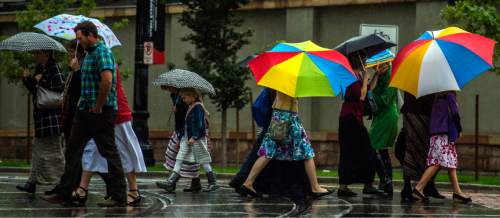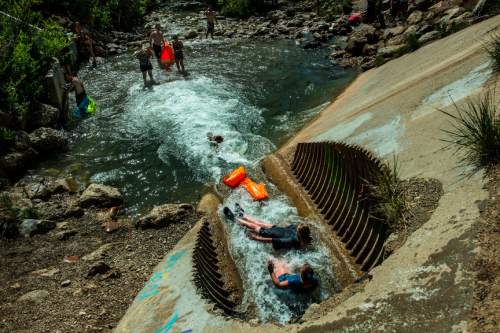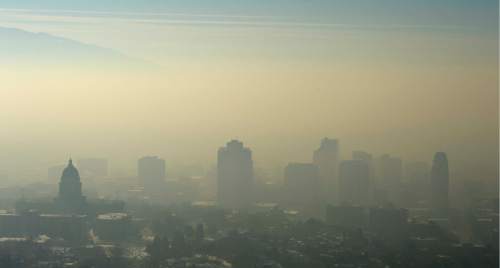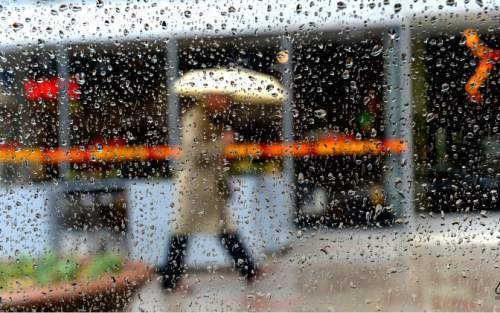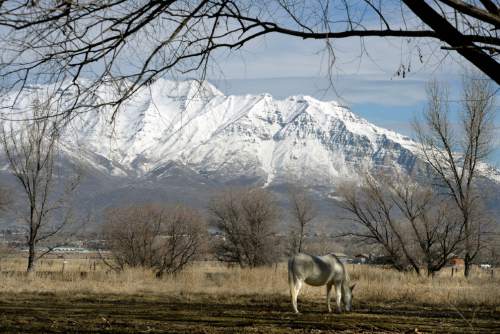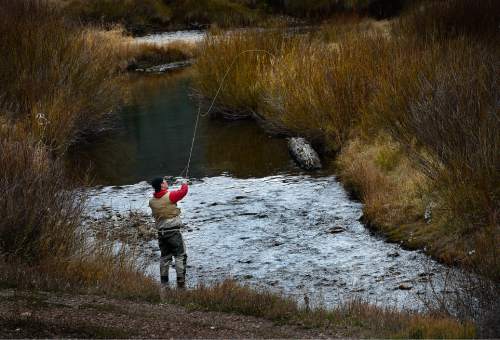This is an archived article that was published on sltrib.com in 2015, and information in the article may be outdated. It is provided only for personal research purposes and may not be reprinted.
Earth faced quite the heat wave in 2014. Everywhere from Utah to eastern Russia, the mountains of South America to the deserts of North Africa endured persistently high temperatures.
The National Oceanic and Atmospheric Administration, along with three other groups, reported Friday that the world just finished the hottest year ever recorded.
It was the fourth-warmest year in Utah. The Salt Lake City area logged 220 days with temperatures above normal and nine with heat records.
At least the summer was nice — if a bit rainy. June and August were the only months with below-average temperatures.
Jadon Thayer pours concrete in Salt Lake Valley during those balmier months, and rain can delay some of his projects. Still, he saw it as a good omen. He always has connected a soggy summer and fall to a snowy winter. And in winter, when the concrete jobs evaporate, his company, Elevated Property, switches into a snow-removal outfit.
But 2014's winter was a dud and early 2015 hasn't been any better. Little snow means little business.
It's an outcome Thayer planned for, even if he thought it was unlikely.
"We save up all year long, just in case," he said, "but this is one of the only years we've had to use that just-in-case fund to pay our employees."
Utah saw almost no snow until Christmas morning, and that series of storms petered out before New Year's Day. Thayer and his six-member crew haven't had anything to plow since, marking the worst year he has seen.
Snowbird Ski & Summer Resort had to make a bunch of artificial snow to open the slopes, but eventually received the mountain storms needed to keep powder enthusiasts carving and grinning.
"This year it was unseasonably warm in the valley," Snowbird spokesman Brian Brown said, "but it didn't create a later opening for us."
Utah's state climatologist, Robert Gillies, notes that when it comes to climate science, one year doesn't make a trend, but he has observed that the Beehive State is undergoing a significant shift toward higher temperatures.
"The climate, as it is globally, is changing quite rapidly in Utah," he said. "In fact, Utah is warming at a rate between one and a half to two times the global rate decade over decade the past 40 years."
So while the state may have a hefty winter here or there, Thayer may need to start working on a backup plan for the chillier months.
In 2014, Utah's average temperature was 2.8 degrees warmer than the 20th-century average (47.5 degrees Fahrenheit). The hottest year on record was 1934, an outlier.
"If you discount 1934, the next eight warmest years for Utah have all been since 1980," Gillies said. The second warmest year in Utah was 2012.
NOAA reported that the average global temperature in 2014 was 58.24 degrees Fahrenheit, up 1.24 degrees from the 20th-century average. The world broke heat records set in 2010 and before that in 2005. The last time Earth set a record for the coldest year was in 1911.
"The globe is warmer now than it has been in the last 100 years and more likely in at least 5,000 years," said climate scientist Jennifer Francis of Rutgers University. "Any wisps of doubt that human activities are at fault are now gone with the wind."
Texas A&M University climate scientist Andrew Dessler and other experts said the latest statistics should end claims by non-scientists that warming has stopped.
They didn't. Climate-denial websites continued to tout claims that the world has not warmed in 18 years.
Last year's heat was driven by record warmth in the world's oceans that didn't just break old marks — it shattered them. Record warmth spread across most of the planet, with the few cooler spots being the central and eastern United States.
"Every continent had some aspect of record high temperatures" in 2014, said Tom Karl, director of NOAA's National Climatic Data Center.
Nine of the 10 hottest years in NOAA global records have occurred since 2000. The odds of this happening at random are about 650 million to 1, according to University of South Carolina statistician John Grego. Two other statisticians confirmed his calculations.
Climate scientists say one of the most significant parts of 2014's record is that it happened during a year with no El Niño weather oscillation. During an El Niño, when a specific area of the central Pacific warms unusually and influences weather worldwide, global temperatures tend to spike. Previous records, especially in 1998, happened during El Niño years.
According to NOAA, every year in the 21st century has been in the top 20 warmest years on record.
Tribune reporter Bob Mims and The Associated Press contributed to this story.






